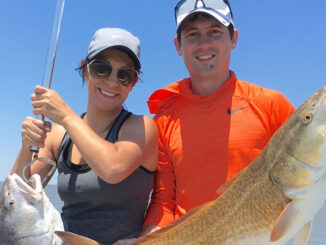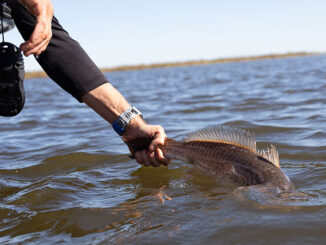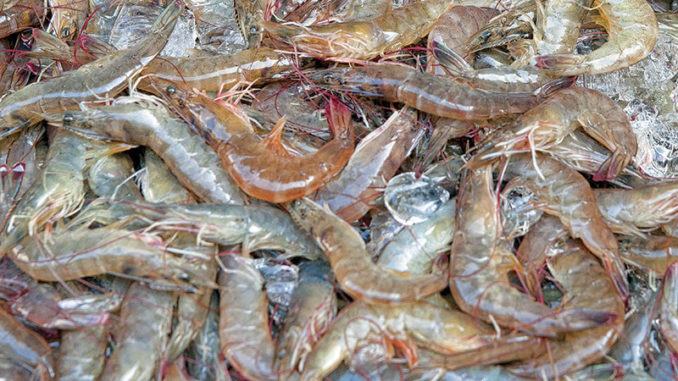
Nothing creates a feeding frenzy along the Gulf Coast like a shrimp migration. Two primary shrimp species call the Gulf Coast home — white and brown shrimp. Both live less than two years, even if nothing eats them. Each species can grow to about seven inches long.
“A shrimp might live about 18 months, but since they are such a high source of food for many predators, we consider shrimp an annual crop,” said Peyton Cagle, the Louisiana Department of Wildlife and Fisheries Crustacean Program Manager in Lake Charles. “Brown and white shrimp can both grow to similar sizes. Shrimp are a critical component of estuarine and offshore food webs, as both predator and prey and a favorite prey for many sport fish.”
Both species look very similar. As the name implies, brown shrimp usually look darker than white shrimp with some orange or yellow tinge. Brown shrimp show a little purple or reddish on their tails with greenish to reddish tint. Commonly translucent bluish-white, white shrimp also show some gray or green with brownish purple edges and a yellowish stripe on their tails. However, some white shrimp could look darker and some browns could be lighter in color.
“Many people go by coloration, but shrimp from different places could have different colorations,” Cagle said. “Their color varies depending upon water clarity and bottom type. A white shrimp normally has an antenna about 2.5 to three times the length of its body. A brown shrimp has a much shorter antenna, about 1.4 times its body length. A brown shrimp has a groove on each side of its head. White shrimp do not.”
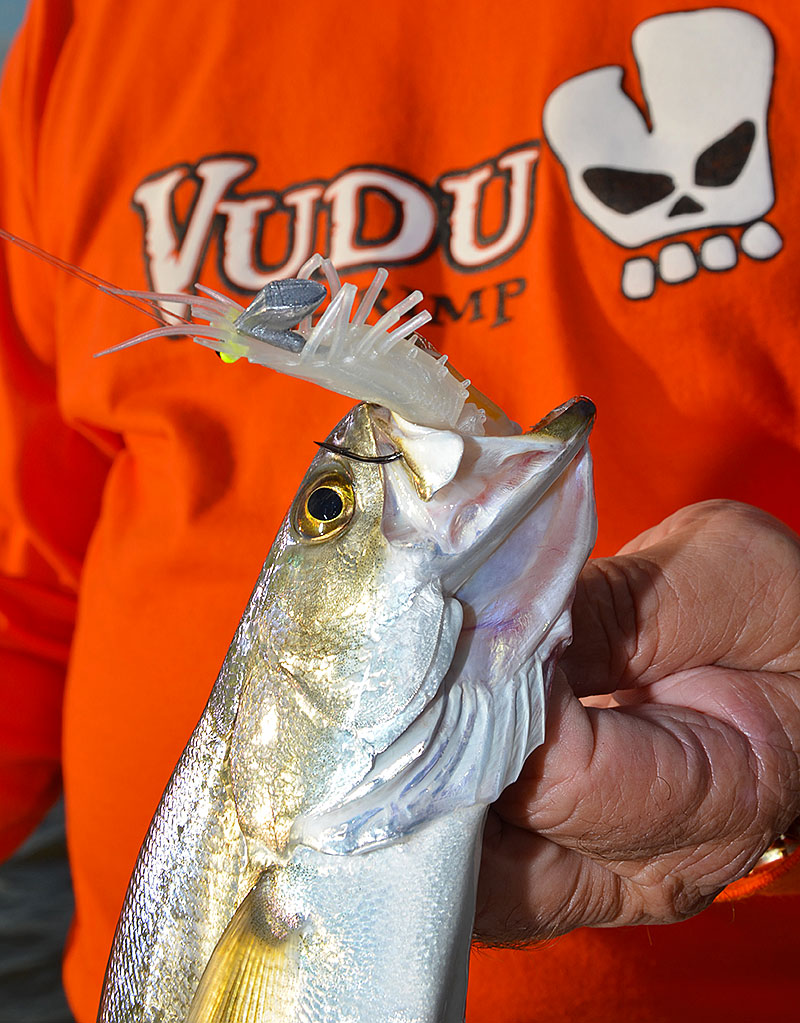
Deep water spawners
Both species spawn in the deep waters of the Gulf of Mexico. Brown shrimp spawn once, sometimes twice a year in the spring and fall. A female white shrimp might spawn four times a year. One female shrimp can produce 500,000 to a million offspring at a time.
Both species migrate to the Gulf at different times. White shrimp spawn mainly from March to November, with peaks in June and July in waters between 29 and 111 feet deep. The eggs drift inshore with the winds and tides where developing juveniles hide among the marsh grasses and grow. Some spawn in the bays and estuaries. White shrimp can tolerate fresher water than browns so they tend to go farther north into the coastal marshes.
“White shrimp spawn offshore in slightly shallower water than brown shrimp,” Cagle said. “Post-larval white shrimp start entering the estuaries in good numbers in about May. We normally see more big white shrimp. Since they can tolerate much lower salinity levels, they can stay in the estuaries much longer and continue growing. Shrimpers have a much longer time to catch them.”
Some white shrimp start leaving the estuaries as early as August or September. Persistent warm weather could delay or slow down the migration, but a good October or November cold front can really kickstart the migration and create a major feeding frenzy. They don’t necessarily go straight offshore like brown shrimp do. The migration could last several weeks.
“Water temperature is one of the main driving forces for shrimp spawning,” Cagle said. “Some white shrimp might have stayed in inshore waters because of a mild winter. Maybe they moved a short distance offshore until the warmer south winds started blowing and warmed the inshore waters. Some recruited in May might start moving in September. Those recruited in August might move with the first cool snap in October.”
Brown shrimp require much higher salinity levels. They could go as much as 50 miles offshore to spawn in deep water. Most stay in water 90 to 180 feet deep, but some move out to more than 500 feet deep. Spawning habitually takes place from late December through January.
“We start seeing brown shrimp in inshore waters in February when we’ve had a mild winter,” Cagle said. “West of the Mississippi River, brown shrimp migrate to the west. Many of the shrimp caught in Texas came from Louisiana. The shrimp want to avoid that massive amount of fresh water coming out of the river.”
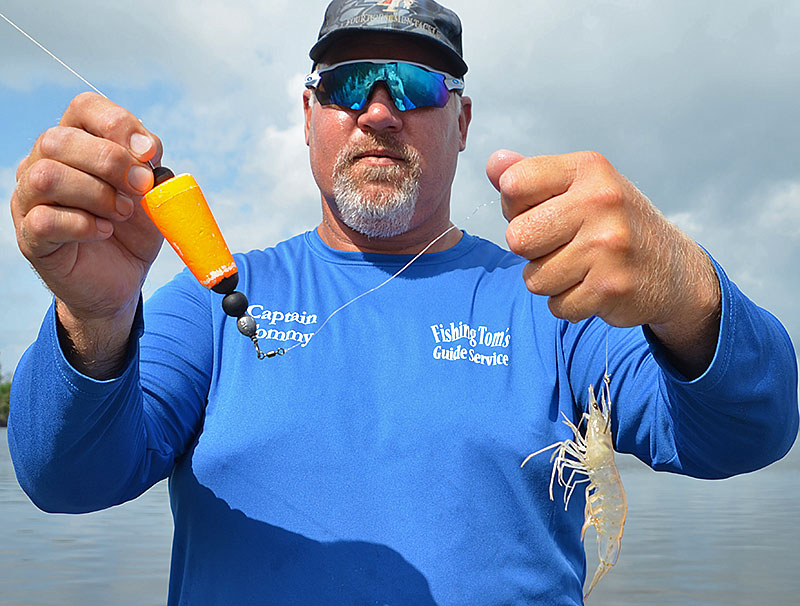
Minor peak in the fall
Tides and currents drive larval and post-larval brown shrimp into inshore waters mainly from February through April. They hide among the marsh grasses. The marsh habitat serves as a nursery ground where tiny brown shrimp can grow. Brown shrimp normally start their southward migration in mid-May or June. An additional minor peak occurs in the fall.
“Brown shrimp utilize inshore habitats early in their lifecycle when they come in and settle out of the larval stage,” said Jason Saucier, the Shrimp and Crab Bureau Director for the Mississippi Department of Marine Resources. “These systems are very important for brown shrimp and white shrimp early in their life history. Brown shrimp usually move out into the Mississippi Sound in May and June, but too much fresh water impacts migration timing and growth rates.”
Shrimp must reproduce prolifically because so many things eat the “bread of the sea.” When shrimp move, every carnivore follows. Both the spring and fall shrimp migrations create major feeding frenzies. Since the fall migration lasts longer, moves slower and white shrimp don’t travel as far, the fall provides the best fishing opportunities. In the fall, speckled trout, redfish, flounder and other species gorge themselves on shrimp to fatten up for the coming winter.
Even largemouth bass get in on the action and eat as many shrimp as they can. In many brackish marshy deltas, such as the Pearl, Sabine, Atchafalaya, Mississippi and Pascagoula rivers, anglers using live shrimp or soft-plastic shrimp imitations might catch a bass, redfish, flounder and then a speck on four casts in the same place, particularly in the fall.
“When there’s a tremendous amount of shrimp in the water, a D.O.A. Shrimp or a Vudu Shrimp works really well for bass,” said Wayne Miller, a bass fisherman. “I catch quite a few bass on them. A plastic shrimp is a visual bait so fish it where the water is a little clearer and fish can more easily see it. In the fall, I look for shrimp jumping on the surface. Where I see shrimp jumping — that’s the place to fish!”
Many people fish using popping cork rigs sweetened with live shrimp or soft-plastic shrimp imitations. When the angler jerks the rod, the cork gurgles on the surface, simulating a fish striking prey. Also, the bait, live or artificial, flies upward and then sinks again, exactly what a terrified live shrimp would do when trying to escape a predatory fish.
Shrimp imitations
Anglers can also fish various soft-plastic shrimp imitations on a jighead or with just a hook. Bounce jigheads tipped with plastic trailers along the bottom. During a falling tide, dropping water levels flush shrimp and other bait from their lairs in shallow marshy ponds, pulling them into deeper water. Redfish, flounder, speckled trout, and other fish, even bass depending upon the location, frequently wait at the mouths of marshy drains watching for the current to bring them a shrimp dinner.
During the fall shrimp run, put a soft-plastic shrimp imitation on the lightest jighead practical. If possible, just slip the shrimp trailer on a hook. If necessary, add one or two small split-shots above the line for better casting. Throw the bait as far upstream as possible. Let the tides carry it naturally downstream. Use the reel only to take up slack.
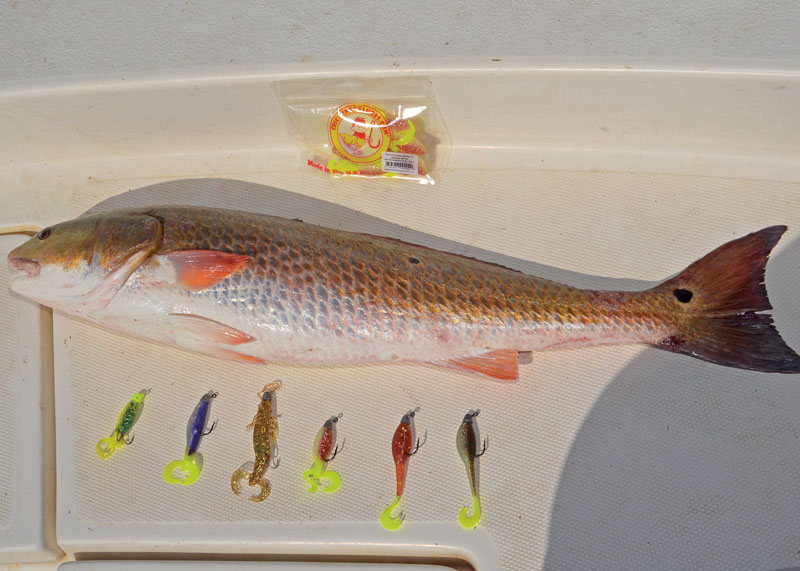
If the bait stops drifting and hits bottom, lift the rod to bring the temptation back into the flow. With a popping cork and live bait, just let the rig drift downstream while reeling up the slack. A live shrimp will provide enough enticing scent and movement so make no additional action. With an artificial bait, jerk the cork periodically. When in a migration frenzy, most fish can’t resist when seeing a shrimp glide past them.
More than finned creatures go after shrimp. A shrimp’s worst nightmare comes with feathers. White shrimp generally swim a little higher in the water column, Brownies prefer to stay closer to the bottom and sometimes even bury themselves in mud. Trout and other fish herd shrimp schools toward the surface to cut off their escape. Sharp-eyed birds easily spot the activity and swoop down to get their share of protein.
“When the shrimp start moving, we typically see a lot of bird activity over the water,” Cagle said. “When we start seeing birds working, that means shrimp are being pushed up from the bottom by fish.”
After spotting a flock of diving birds, never run full throttle into the commotion. Nothing shuts down a feeding frenzy quicker than a whirring propeller driven by a powerful outboard. Instead, plan a drift using the wind or tides to intercept the school and approach silently. Use the trolling motor only sparingly for position control.
During a shrimp migration, action can come incredibly fast in the right spot. On any November day, anglers who find the shrimp could load a boat in a short time.
Seabobs? Another kind of shrimp
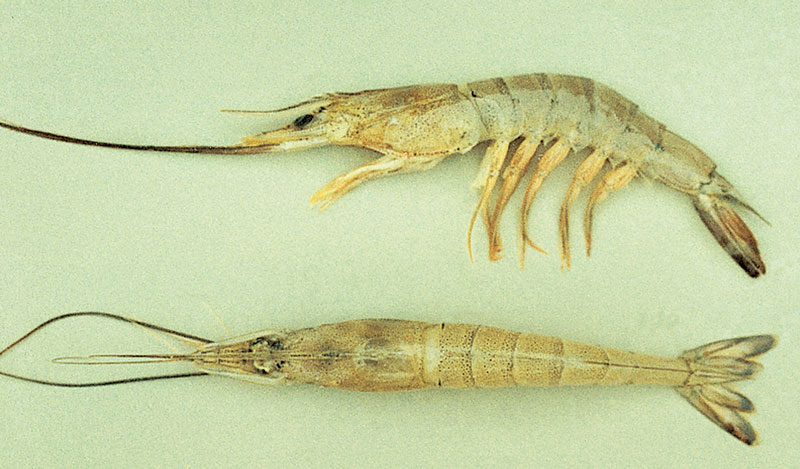 Brown and white shrimp comprise about 98 percent of the commercial landings in Louisiana, but another crustacean lives in the Gulf of Mexico.
Brown and white shrimp comprise about 98 percent of the commercial landings in Louisiana, but another crustacean lives in the Gulf of Mexico.
Smooth with whitish to grayish coloration and some yellow, seabob shrimp range from North Carolina along the Atlantic Coast down to Brazil and throughout the Gulf of Mexico. Rather than migrate to the estuaries, seabobs normally stay in water between 65 and 100 feet deep. They usually appear in the largest numbers during July or October to November. In the fall, they often congregate along the beaches and around river mouths and passes, especially after a cold front passes.
“Seabobs spend their lives offshore,” said Peyton Cagle, the Louisiana Department of Wildlife and Fisheries Crustacean Program Manager. “During certain times of year, seabobs push in to Louisiana state offshore waters from the shoreline out three miles. They are very seasonal. In some years, the numbers are good. In other years, the numbers are really low. People could use them for bait. They are definitely edible, but are fairly small shrimp.”
Female seabobs can grow to about 5.5 inches long. Males grow to about 4.5 inches long. Seabobs can live nearly two years if nothing eats them first.
